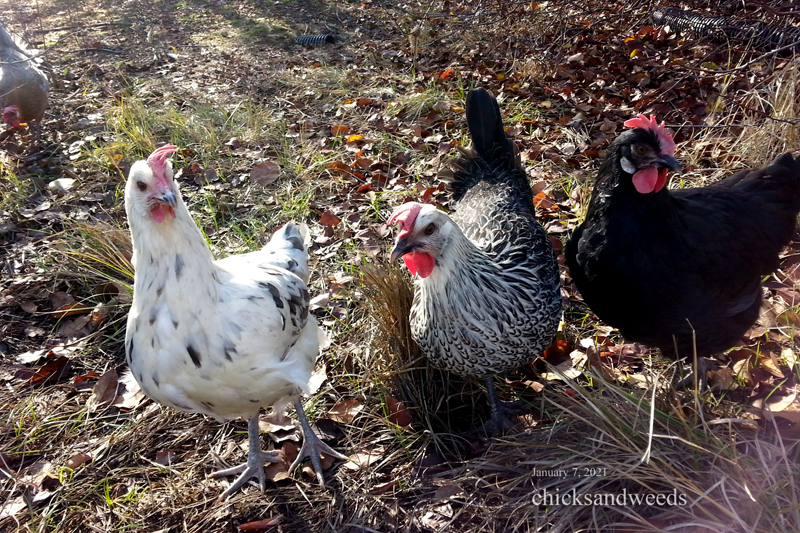Why do even wonder about it? And that is a good question, but here goes:
I didn’t want to believe my eyes when I saw some of the new girls molt this fall, loosing their feathers just like adults. So, these sweet young chickens you see here hatched in the beginning of April 2021, there were a total of six.

Five of the six started laying about 5-6 months of age. Yay, and I was hoping for them to lay some eggs through the winter, like all other girls seemed to have done so far. Then, about 1-2 months later, egg production dropped to no eggs at all. Instead, two of them began molting, actually, 3 of the 6 pullets did. Like an actual molt. Hm. What happened here?
Maybe integration into the flock in the fall was too stressful, even though they still have their old coop to use and roost in? That is the only thing I can think of in terms of stress, because I kept the 2 eager to mate young roosters separately during that time. Of note also that one of the girls (Diamond, the one that pulled my diamond stud earring out) didn’t start laying till December and is not molting.
A sort of trivia question: will they assume laying as hens or pullets – egg size and amount is said to vary, smaller, more frequent eggs in pullets, fewer and bigger in hen., not that I can do much about it one way or another. I was hoping they would lay through the winter, more or less, and molt till next fall. Looking online, there is no definite agreement on what a pullet is.
Generally, a pullet is a female chicken prior to the first adult molt, which can happen anywhere from a few months old to 15-18 months of age? Some say a pullet is a female chicken younger than 1 year of age. Or is it whichever comes first? My original group 9 years ago didn’t molt this early. There were eggs through the winter, even with no supplemental light. In fact, none of the other chicks did adult type molt that first winter.
Now these young ones after the molt, are they now hens or remain pullets till one year of age? They still look like pullets. In my experience they fill out so much in their second year that I go by looks. Pullets start looking like big girls, like hens, like adults. So I will call them pullets still, even though, technically, some of them are apparently now hens.
Anyway, just goes to show you that observation of what is actually happening with your flock and birds cannot be substituted, no matter what “they”, meaning online folks, say, no matter how generally accurate the information may be.
Similarly, whatever you learn or whatever ideas you have about something or about yourself can inform you but cannot substitute for (self) observation, for seeing and sensing what is actually the case.
